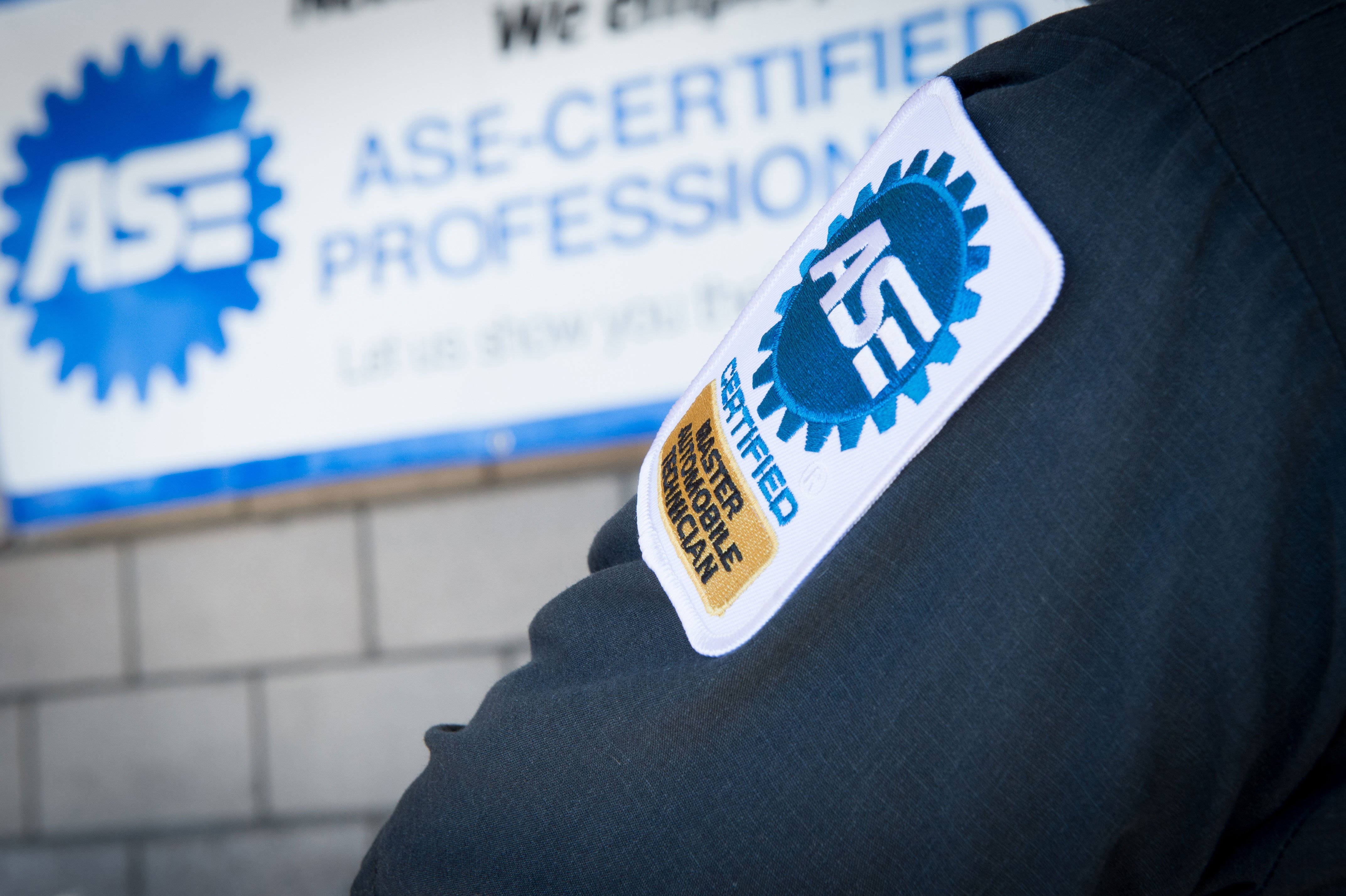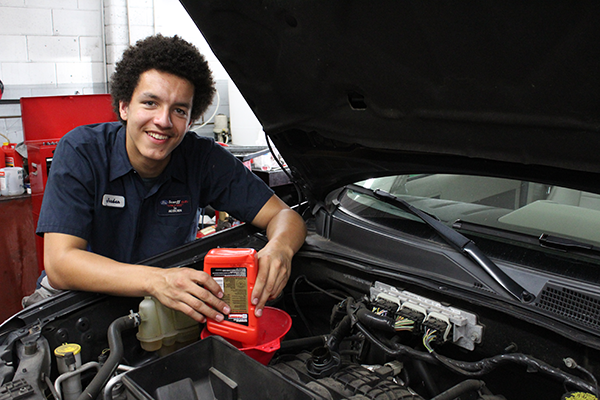⚙️🚗 How do you teach foundational skills?
Brian LaCroix:
I like to group the foundational chapters together. As the new coauthor of Modern Automotive Technology, I took the opportunity to streamline the book and get all those foundational chapters together, to make a student ready for the entry level roles and get them out into the shop doing some basic service. You see that same organization in the ASE task list—those foundational skills of career readiness, safety, fluids, oils, coolants, lubricants, and chemicals.

I think we could all agree that everybody teaches their program a little bit differently. It’s really up to the instructor to choose. Maybe the students want to go in a certain direction, or you have marching orders from your school. Whatever the case is, the organization in Modern Automotive Technology gives instructors the autonomy to move around and teach in the priority order that they feel fits.
⚙️🚗 How can you help your students master their foundational skills, and how you do use this “fundamentals first” approach in your program?
Brian LaCroix:
I think it’s important to cover some of the core topics right up front—such as safety, the construction of the automobile, the history of it, and basic hand and power tools.
Also important is coverage of the tasks that students will perform day-to-day. For example, they will perform hundreds of oil changes before they actually tear an engine apart or remove an engine from a vehicle. Let's make sure that they first know everything that they should about engine oils, fluids, and maintenance checks.
We also added a chapter on vehicle cleaning and detailing. Students may think it's easy to clean a car, but sometimes they can do damage to a fender when they wipe a nice shop rag on the fender of a car and then you have to perform some paint correction. Not only is this good exposure to the basics, but it’s also exposure to different career paths within the automotive industry, whether they focus on vehicle cleaning and detailing or other specialty areas.
⚙️🚗 Can you walk us through a little bit about the creation of the HVAC systems unit and why it’s so important?
Brian LaCroix:
A key factor is having EPA 609 certification coverage (refrigerant recovery and handling regulations), to make sure that students are legally compliant to perform air conditioning repair and that their work is following the proper protocols to be environmentally safe.
We've rolled in as much as we can into this edition of Modern Automotive Technology so that instructors don’t have to go to another source. You are able to seamlessly teach your students that additional aspect of following up with regulations and your licensure, and again, talking about the legalities and the liability that falls on a technician when they're out in the field.
⚙️🚗 Can you tell us more about how you approach the teaching of computer networks for this course, so that technicians are able to analyze the data and troubleshoot to ensure that vehicles operate safely and effectively?
Brian LaCroix:
Almost everything is network controlled in a vehicle. If we want to adjust our power window, turn on our rear defroster, open our sunroof—everything is network controlled to reduce wiring and module communication. This is a very important topic. What we're finding is the students need to learn about this early on in their training, so that they can be more successful in understanding how to diagnose how these systems operate.
⚙️🚗 What about hybrid and electric vehicle safety—how can we teach the required precautions?
EV instruction includes personal protective equipment (PPE), automotive testing equipment and tools, high voltage electric system lockout processes, and the designated procedures that technicians must adhere to when servicing hybrid or electric vehicles to prevent injury or vehicle damage.
With the high voltage systems and EV drive technology, there are a lot of systems that overlap. I keep hearing people say “it’s coming” about electric vehicles, but the reality is that it's been here for years. We just haven't been giving it the spotlight that it deserves.
As instructors, we need to make sure that we're paying attention to EVs and doing our due diligence when we're training our entry level learners, entry level technicians, and anyone who is continuing on in the field—before they dive into tearing apart a high voltage battery or get into these systems.
It shouldn't be a scenario where our students are scared of a system because it's high voltage and because there are dangers there. We need to teach them how to operate themselves and the systems in a safe manner. It’s also a great way for them to become specialists in these areas where there are not a lot of experienced personnel. There are many vehicles in service and they're going to need maintenance and repairs of some level for the next 10, 20, 30 years.
⚙️🚗 What about ADAS, Advanced Driver Assistance Systems and services?
Brian LaCroix:
Students need to learn the diagnosis, service, and calibration of ADAS specialized tools and equipment to service these systems. There can be a lack of standardization in ADAS between manufacturers, and students need to learn how to program and calibrate. Sometimes it’s simple, and other times there's sophisticated equipment and we need trihedral targets and some very specific measurements from these systems on a level surface in a clean room environment to calibrate these systems properly so that the drivers can operate safely.
⚙️🚗 Tell us a little bit more about the ASE-type questions and their importance for preparing students for certification.
Brian LaCroix:
Absolutely, since ASE certification is how even manufacturers are assessing their technicians. This is how we get our certification, so it makes the most sense to use ASE-type questions to prepare our students for their certification upon graduation or completion as they progress through their professional career. Updating all of these questions in the book and making sure that they are accurate, relevant, and rigorous has been a top priority.
Thank you for sharing your expertise, Brian!
This Q&A is based on a recent webinar with Brian LaCroix. To listen to the full webinar, click here.
______________________________________________________________________
 Modern Automotive Technology, written by Brian LaCroix, is a comprehensive solution that will take your students from class to career, covering the 8 ASE systems areas and correlated to all three levels of the latest ASE Education Foundation task lists. This text details the construction, operation, diagnosis, service, and repair of late model automobiles and light trucks.
Modern Automotive Technology, written by Brian LaCroix, is a comprehensive solution that will take your students from class to career, covering the 8 ASE systems areas and correlated to all three levels of the latest ASE Education Foundation task lists. This text details the construction, operation, diagnosis, service, and repair of late model automobiles and light trucks.
Learn more and take a free preview!
Photo Credits:
Thumbnail: ASE
Image 1: ASE
Image 2: Courtesy of Erin Brennan





